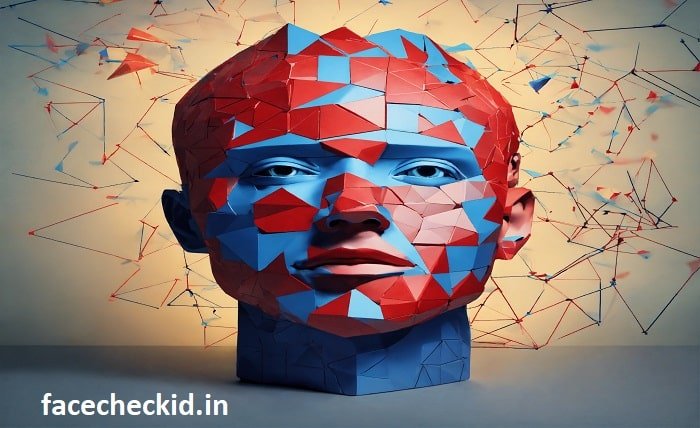AI Face Technology: How Artificial Intelligence is Shaping Facial Recognition

Artificial Intelligence (AI) has revolutionized many aspects of our lives, and one of the most intriguing applications is AI face technology. AI face technology refers to the use of artificial intelligence to analyze, recognize, and generate human faces. This technology has significant implications for various fields, from security and healthcare to entertainment and social media. Understanding AI face technology is essential for navigating its benefits and challenges. In this guide, we will explore the different facets of AI face technology, its applications, and its impact on society.
1. What is AI Face Technology?
AI face technology involves the use of artificial intelligence algorithms to process and analyze facial features. These algorithms can detect, recognize, and generate faces with high accuracy. AI face technology encompasses several subfields, including facial recognition, facial analysis, and facial generation. Facial recognition identifies individuals based on their unique facial features, while facial analysis assesses emotions, age, and other attributes. Facial generation creates new faces based on existing data. Together, these applications form a comprehensive suite of tools for working with human faces.
2. How AI Face Technology Works
AI face technology relies on complex algorithms and machine learning models to function. At its core, AI face technology uses convolutional neural networks (CNNs) to process images. These networks are trained on vast datasets of facial images to learn patterns and features. When a new face is encountered, the AI system compares it to the learned patterns to identify or generate the face. The technology involves several steps, including face detection, feature extraction, and matching. Advanced models continually improve their accuracy by learning from new data and experiences.
3. Applications of AI Face Technology
AI face technology has diverse applications across various industries. In security, facial recognition systems are used for access control and surveillance. In healthcare, AI face technology can assist in diagnosing medical conditions based on facial features. Social media platforms use AI face technology to enhance user experiences through automatic tagging and photo organization. Additionally, the entertainment industry leverages AI to create realistic avatars and characters in video games and movies. These applications demonstrate the versatility and impact of AI face technology in modern life.
4. Benefits of AI Face Technology
The benefits of AI face technology are numerous and impactful. In security, facial recognition enhances safety by providing accurate and efficient identification of individuals. In healthcare, AI face technology enables early detection of conditions such as genetic disorders or emotional distress. Social media users benefit from automated photo tagging and enhanced privacy features. The entertainment industry gains from realistic and immersive experiences created by AI-generated faces. Overall, AI face technology offers increased convenience, improved accuracy, and enhanced user experiences across various domains.
5. Challenges and Ethical Considerations
Despite its advantages, AI face technology also presents several challenges and ethical considerations. Privacy concerns arise as facial recognition systems collect and store personal data. The potential for misuse or unauthorized access to this data raises significant issues. Additionally, biases in AI algorithms can lead to inaccurate or unfair outcomes, particularly for marginalized groups. Ensuring transparency, accountability, and ethical use of AI face technology is crucial to addressing these challenges. Developers and policymakers must work together to create frameworks that protect individuals’ rights while leveraging the benefits of AI.
6. The Future of AI Face Technology
The future of AI face technology is poised for significant advancements. Emerging trends include the development of more sophisticated algorithms that improve accuracy and reduce biases. Enhanced facial generation techniques will enable more realistic and diverse avatars and characters. Integration with other technologies, such as augmented reality (AR) and virtual reality (VR), will expand the applications of AI face technology in immersive environments. As AI continues to evolve, its capabilities in facial recognition and generation will likely become even more advanced, offering new possibilities and opportunities.
7. AI Face Technology in Security and Surveillance
In the realm of security and surveillance, AI face technology plays a crucial role. Facial recognition systems are increasingly used for access control in secure facilities, identification of individuals in public spaces, and monitoring of potential threats. AI algorithms can process large volumes of data quickly and accurately, making them valuable tools for law enforcement and security agencies. However, the use of AI face technology in surveillance also raises privacy concerns and ethical questions about consent and data protection.
8. AI Face Technology in Healthcare
AI face technology has promising applications in healthcare. By analyzing facial features, AI systems can assist in diagnosing genetic disorders, monitoring emotional states, and detecting signs of certain health conditions. For example, AI face technology can identify characteristic facial features associated with specific syndromes or track changes in facial expressions related to mental health. These applications offer the potential for more personalized and proactive healthcare solutions, improving patient outcomes and enhancing medical research.
9. The Role of AI Face Technology in Social Media
Social media platforms utilize AI face technology to enhance user experiences and streamline interactions. Features such as automatic photo tagging, face filters, and personalized content recommendations rely on AI algorithms. By analyzing user-uploaded photos, AI systems can identify and tag individuals, apply effects, and curate content based on user preferences. While these features provide convenience and creativity, they also raise concerns about privacy and data security. Users must be aware of how their facial data is used and take steps to protect their information.
10. Best Practices for Using AI Face Technology
To ensure responsible and effective use of AI face technology, consider the following best practices:
- Ensure Privacy: Implement measures to protect users’ facial data and obtain consent for its use.
- Address Biases: Regularly review and update AI algorithms to minimize biases and ensure fairness.
- Transparency: Communicate how AI face technology is used and provide users with options to control their data.
- Ethical Use: Adhere to ethical guidelines and standards for the development and deployment of AI face technology.
Conclusion
AI face technology represents a significant advancement in the field of artificial intelligence, offering a range of applications and benefits across various industries. From enhancing security and healthcare to transforming social media experiences and entertainment, AI face technology is shaping the way we interact with and understand human faces. However, it also presents challenges related to privacy, ethics, and biases that must be carefully managed. By staying informed about the latest developments and adhering to best practices, individuals and organizations can make the most of AI face technology while ensuring its responsible and ethical use.
FAQ
1. What is AI face technology used for?
AI face technology is used for various applications, including facial recognition for security, facial analysis in healthcare, and automatic photo tagging on social media. It also plays a role in creating realistic avatars and characters in entertainment.
2. How does AI face technology work?
AI face technology uses convolutional neural networks (CNNs) and machine learning algorithms to process and analyze facial images. It involves steps such as face detection, feature extraction, and matching to identify or generate faces.
3. What are the benefits of AI face technology?
The benefits of AI face technology include enhanced security through accurate identification, improved healthcare through diagnostic assistance, and better social media experiences with features like automatic tagging and filters.
4. What challenges are associated with AI face technology?
Challenges include privacy concerns, potential misuse of facial data, and biases in AI algorithms that can lead to unfair outcomes. Addressing these challenges requires careful consideration and ethical practices.
5. How can I ensure responsible use of AI face technology?
To ensure responsible use, implement privacy measures, address biases, maintain transparency, and adhere to ethical guidelines. These practices help protect users’ rights and promote the ethical development and deployment of AI face technology.





